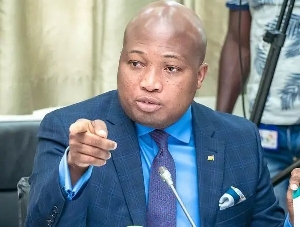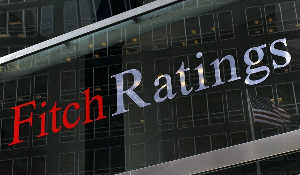A recent signpost that greets the visitor at the entrance of the CPRM and some fairly fresh painting of some walls, however, belie the years of neglect that is exposed by very old wiring and some archaic equipment, including research tools and noisy air conditions in some laboratories and offices.
Established in 1975 with Dr Oku Ampofo, a renowned allopathic medical practitioner, as its first director, the CPMR is a very rich research centre, yet very poor due to years of neglect.
It is very rich in its potential to do extensive research into plant medicine, yet very poor in the equipment to conduct such research.
Formerly known as the Centre for Scientific Research into Plant Medicine, the Mampong Akwapim facility has the potential to also rake in money for the country and produce well-tested plants and herbal medicine, due to the wealth of expertise it has by way of the high calibre of research personnel. Such medicines would reduce the high cost of the importation of orthodox medicines by the government.
But in what can be described as a paradox or an irony, all the wealth of experience and potential of the research centre has almost come to naught, as the facility and workers numbering over 200, including research scientists, medical herbalists, pharmacists, nurses and technologists, are barely hanging on a thin thread for survival.
They even lack the most basic modern production equipment to produce and properly package medicines for the public, although the ones they produce through very crude methods do not even meet the high demand.
The result is that they constantly lose out to privately owned centres after they have conducted extensive research into the right combinations needed for the medicines.
Challenges
The Director of CPMR, Dr Augustine Ocloo, during a recent visit by the Minister of Health, Mr Alex Segbefia, the first by a health minister, presented an astonishing list of challenges plaguing the centre and hampering its operations.
Some of the challenges, he said, were the centre’s inability to meet the demand for its products, lack of infrastructure such as properly built research laboratories, the absence of a functioning laboratory for the pharmaceutics department and the inadequate supply of raw materials.
Other challenges are inadequate inputs for research such as basic equipment and reagents, inadequate staff and the centre’s inability to meet its financial obligations. As of October 1, 2015, the outstanding debt of the centre was approximately GH¢1,000,000 and included arrears in electricity bill of GH¢200,000 and an outstanding loan balance of GH¢423,226.64 for three new pick-up vehicles.
Dr Ocloo, who stated thus, said, “The centre does not receive enough support from the ministry in terms of medical equipment and supplies.”
Notable achievements
However, he noted that the centre had made some remarkable achievements, which included the acquisition of a new bottling line at a cost of US$101,190 to replace the dysfunctional one that had been used for over 10 years, a tea-bagging machine, sieves and a water treatment unit.
The centre also has on the market over 30 herbal products for various ailments such as malaria, typhoid fever, hypertension and prostate gland enlargement, and collaborates with the Japanese Development Agency (JICA) and the Noguchi Memorial Institute for Medical Research to develop compounds for malaria, trypanosomiasis and other diseases.
It has also collaborated with the World Health Organisation (WHO), which designated it as a Centre for Traditional Medicine in December 1981, the Danish Development Agency DANIDA and various foreign universities, including the University of Leipziq, Germany; the Royal Danish University of Pharmaceutical Sciences, Denmark; the University of Michigan, USA and the University of Aberdeen, UK.
Stating that the CPMR had a huge potential to contribute significantly to quality healthcare delivery in the country as well as generate foreign exchange, Dr Ocloo said, “For this potential to be fully harnessed there is an urgent need for injection of some capital of roughly GH¢2 million”.
He also called for the establishment of a Plant Medicine Research Fund as a matter of urgency to help in mobilising resources to improve and strengthen the herbal industry in the country.
Official response
To be able to offer the needed assistance to the CPMR, Mr Segbefia asked the centre to prioritise its challenges. He also called for teamwork between the centre and the Ministry of Health to deal with the challenges as well as promote the centre’s successes.
Brief history
The CPRM originally started as a small Outpatient Department run by Dr Ampofo at the current Community Centre (Obikyere) of Mampong-Akwapim. Dr Ampofo came up with the idea of a centre for traditional and herbal medicine, after Ghana’s first President, Dr Kwame Nkrumah, had sent him and others to China to benefit from the Chinese experience in herbal medicine.
In 1971, Dr Ampofo and a team, including representatives of the Ghana Academy of Arts and Sciences and the Ghana Psychic and Traditional Healers Association, sent a proposal to the government recommending the establishment of a national centre to facilitate and coordinate all research on Ghanaian medicinal plants which resulted in the centre’s establishment in 1975 by NRC Decree 344.
Opinions of Wednesday, 23 March 2016
Columnist: Edmund Smith-Asante


















